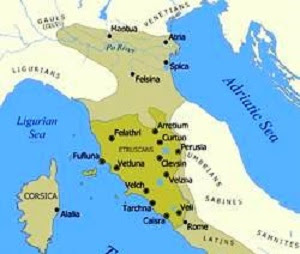Dante Alighieri was a
statesman, poet and father of the modern Italian language. May 29th2015
was the 750th anniversary of his birth in Florence. As a literary
figure, Dante is placed alongside Homer and Shakespeare, creators of larger
than life characters.
The Divine Comedy, his
defining work, is, among other things, a first for the Italian language and a
representation of the spiritual, personal and political circumstances of his
time. The latter led Dante into exile from Florence, including in Marche, where
he provided profound inspiration to the local culture.
Urbino is
remembered by Dante in the 27th canto of the Inferno in a dialogue
with Guido of Montefeltro, the local lord. Fiorenzuola di Focara owes its
notoriety for having hosted Dante Alighieri in a baker's house where the poet experienced the
emotion of strong wind gusts lashing the
promontory on which stands a castle
by the sea creating the most incredible
and dangerous currents.
The Gradara Castle and rocks
live in the hearts of lovers all over the world; here, the love story between Paolo de
Malatesta and Francesca da Polenta
- better known as Francesca da Rimini – blossomed, came to a tragic end and was eternalized by Dante in
the V canto of the Inferno. You can view the altarpiece by Giovanni Santi,
father of Raffaello Sanzio - Raphael.
Pesaro is not
directly cited however it maintains strong connotations to Dante because
Gianciotto de’ Malatesti, nicknamed the Cripple, was mayor of this seaside town
and is buried here. Dante consigned him to Hell.
Fonte Avellana Dante
spent much of his life in the footsteps
of Pier Damiani, to whom he dedicated the 21st canto of
Paradise in the Divine Comedy. He also visited Mount Catria in search
of a peace and tranquility denied him in his native Florence.
Dante
and the Gastronomical Traditions of Marche
There
is a rich presence of food in the Divine Comedy and his other works, including
lentil soup laced with wine, figs, apples, honey and vin santo; in all, 14
courses are cited in the Convivio. Also well-known are the cantos dedicated to
the gluttons in both Hell and Purgatory that accompany his constant hunger; he
even coined the neologism scuffare -
to eat avidly and noisily. There is a rapport between diet and eroticism: the
gluttons come right after the lustful in Inferno’s 6th canto and, in
Purgatory, those that fall to temptations of the senses are presented in the
last of the seven frames.
the
best way to travel is in the company of people who live and work in the places
you visit. So, if you are planning a vacation or business trip contact us
for a no obligation travel itinerary.
We don’t just sell you a
travel plan; we experience it with you!
Some
Dishes inspired by Dante
Tartare of Madonna Bellaccoglienza these
are the classic waffles from
Abruzzo wrapped with
aged cheese, making them into
cannoli. Madonna Bellaccoglienza
is the sensual protagonist
of the novel in verse The Flower which Dante wrote translating
from the French Roman de la rose.
Glauco Omelette a
cheese omelette, served hot and
in wedges, with algae
or herbs that
make it gently magical. Glauco, the legendary fisherman
of Boeotia, places his catch on a
bed of herbs, then sees them take heart
and jump back into the sea. He ate the algae,
turned into a fish and became a marine deity.
Suppa alla Beatrice a
barley soup of barley with tricolor vegetables sprinkled with
grated aged cheese.
Beatrice, dressed in white, red
and green, announces that God’s righteousness is not afraid soup, referring to the curious Florentine custom
of forgiving even the most serious crimes if the perpetrator could eat a
soup dish at least 7 times at
the crime’s site without getting arrested. ("Paradise"
33rd).
Mense alla Virgilio the Piadina of Romagna. Virgil, acting as a guide to Dante in
the Divine Comedy,
tells
him from the Aeneid that the Trojans acquired the custom of eating piadine with
their food during
a
stopover in Africa; a culinary tradition they introduce in Rome and later in
Romagna (Inferno 1st).
Salse alla Ciacco a spicy Bolognese mustard. Ciacco is
a Florentine character know for the
prodigious
appetite, and placed among the gluttons in Hell by Dante. The colors of the
sauce – white,
red
and green – symbolize the Christian Faith, Hope and Charity.
Anguille alla Vernaccia the
famous eels from Bolsena and Cornacchio are marinated in Sardinian or
Ligurian
vernaccia and roasted over olive wood coals. For Dante, a condemnation of Pope
Martino
IV
to Purgatory (24th) who spent more time on food and less as St
Peter’s Vicar.
Honey and Fossa Cheese from
Monte Diana a classic accompaniment and an aphrodisiac which in
theological
terms unite knowledge (milk) and justice (honey). The reference to Diana –
goddess
of
the moon and of night – is the ancient etymology of Mondaino, a town now famous
for its fossa
cheese
(Paradise 18th).
Torta di Frutti Misti a pie
made of apples, pears, figs and plums, present in all religions.
Vini dei Colli di
Romagna famous area wines – sangiovese, albana,
rebola, vini di sabbia.
Acqua Lete available
commercially today. When Dante reached Earthly Paradise, he was
immersed
by a beautiful woman named Matelda in the Lete River, so named because capable
of
removing
one’s sins – a baptism. Emerging from these waters, one could continue the
journey to
Celestial
Paradise (Purgatory 28th).
















